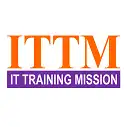By adhering to the following suggestions, you can ensure smoother operations of your training center in the local area while maintaining full legal compliance:
Education Institute Registration under the Shop Act in Cities Area
Trade License under Shop and Establishment Act, Registration Process- Registering an educational institute under the Shop and Establishment Act is essential for those institutes operating commercially in cities area. This act ensures that your business complies with labour laws and regulations related to working hours, wages and working conditions. Steps to Register:
Prepare Required Documents:
- Proof of establishment (e.g., rental agreement or ownership document).
- ID proof of the proprietor (Aadhaar card, PAN card).
- Address proof of the educational institution.
- Personal PAN card of the proprietor.
- Passport-sized photographs of the proprietor.
Online Application Submission:
- Visit the state’s labor department or municipal corporation's official website for registration under the Shop and Establishment Act.
- Complete the registration form with details about the educational institute.
- Attach the scanned documents and submit the application online.
- Pay the required registration fee, which varies from state to state.
Inspection (if required):
Some states may require physical verification by an inspector before issuing the certificate.
Certificate Issuance:
Upon verification of your documents and approval of the application, the department will issue a Shop and Establishment Registration Certificate, which is valid for a specified period and must be renewed regularly.
State-wise Links for Trade License Registration under Shop and Establishment Act:
For states without dedicated online portals, you may need to visit the local district labour office or municipality or contact nearby shopkeeper who has already taken trade license, to complete the registration process. Always check with your state's labour department for the latest processes and procedures.
MSME Registration for Educational Institutes
If Trade License or Shop Act Registration is not available in your area or you encounter difficulties with the process, you have the option to register your institute under MSME (Micro, Small, and Medium Enterprises) registration. Although it is not mandatory, MSME registration offers several advantages, including access to subsidies, tax rebates, and easier loan approvals. The registration process is free of charge, and you can visit the official MSME registration website, Udyam Registration, for more details. Alternatively, you can seek assistance from a local representative who helps with online registration forms. Steps to Register under MSME:
Prepare the Necessary Documents:
- Aadhaar number of the proprietor.
- PAN card of the business or proprietor.
- Business address proof.
- Bank account details of the educational institute.
- NIC code of the educational service being offered.
Udyam Registration:
- Visit the official Udyam Registration website.
- Complete the form with the necessary details such as Aadhaar, business name, and address.
- Provide the PAN number and bank account details of the business.
- Submit the form and obtain the MSME Udyam Registration Certificate.
Benefits of MSME Registration:
- Easier access to loans and financial aid from the government.
- Tax benefits and exemptions.
- Priority sector lending by banks.
- Concessions on electricity bills.
Obtain a Trade License from Panchayat Office
If your business is located in village and you do not want to register under MSME then Visit the Panchayat Office in your village and apply for a Trade License (commonly known as "Vyapar Kar License" or "Dukandari License"). This is required to start a small business or shop within the Panchayat's jurisdiction.
Documents Required:
- ID Proof and Address Proof of the business owner.
- Proof of premises (ownership/rent agreement).
- Application form (available at the Panchayat office).
- Basic fees (depending on local Panchayat rules).
- Submit the required documents to the Panchayat authority.
Opening a Current Account for Proprietorship training business
Steps to Open a Current Account for a Proprietorship Business- Opening a current account for your proprietorship business is essential for managing business transactions, separating personal and business finances, and maintaining a professional financial structure.
Choose a Bank:
Select a bank that offers services best suited to your business needs, such as online banking, low minimum balance requirements, and special business account services.
Gather Required Documents:
The following documents are typically required to open a current account for a proprietorship business:
Proprietor’s Identity Proof:
- Aadhaar Card
- Passport
- PAN Card
Proprietor’s Address Proof:
- Voter ID
- Driver's License
- Utility Bill (not older than 3 months)
Business Address Proof:
- Rental Agreement
- Property Tax Bill
- Utility Bill (not older than 3 months)
Business Proof (Select Any):
- GST Registration (if applicable), if your business yearly turnover is over 20 lakh then GST is compulsory, otherwise not.
- Shop and Establishment Act Certificate (if applicable)
- MSME Registration (Udyam Certificate) (optional but beneficial)
- Business Licenses issued by Municipal Corporations or Local Authorities
- CA Certificate or Income Tax Returns (if required by the bank)
Business PAN:
PAN card of the proprietorship or Proprietor/Owner personal PAN.
Other Documents:
Recent Passport-size photographs of the proprietor.
Proprietorship stamp with the following information:
Sample Proprietorship Stamp to be used while signing current A/c application form:
[XYZ Computer Institute Name Here]
[Proprietor: .....................................]
Visit the Bank or Apply Online:
- In-Person Application: Visit the branch of the bank where you intend to open the current account. Submit all required documents, and complete the bank’s account opening form.
- Online Application (if available): Many banks offer the option to open current accounts online. Visit the bank’s official website and fill in the required details.
Complete KYC (Know Your Customer) Process:
The bank will perform a KYC check, which requires verification of your identity and business documents. This may also involve a visit by a bank representative to your business location for verification.
Initial Deposit:
Some banks may require an initial deposit to activate the account. The minimum balance requirement varies by bank, so check with your chosen bank regarding their policy.
Account Activation:
After successful verification and submission of documents, the bank will activate the current account. You will receive-
- Account number
- Cheque book
- Debit card
- Net banking login details
Start Using Your Account:
Once your current account is open and active, you can use it for business transactions, including receiving payments from clients, making vendor payments, and paying bills. Always Activate E-COM Facility in your debit card or Online Banking.
Advantages of a Current Account for Proprietorship:
- No Transaction Limit: You can make numerous daily transactions without any limit.
- Overdraft Facility: Banks often offer an overdraft facility to manage short-term financial needs.
- Business Loans and Credit: Current accounts help establish a banking relationship that can assist in securing loans and credit facilities in the future.
- Easy Payments: Use cheque, demand drafts, and net banking for easy and professional payments.
These steps and documents are essential for setting up a current account for a proprietorship business, helping you manage finances effectively and maintain a clear distinction between personal and business transactions.
How to File Income Tax Return (ITR) for Sole Proprietorship training Business Using Proprietor's Personal PAN
A sole proprietorship is not considered a separate legal entity, so the proprietor files the business income and personal income tax under their personal PAN. Contact your local CA for audit and filing ITR of proprietorship on Personal PAN.


















